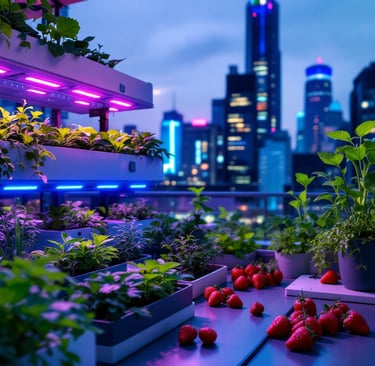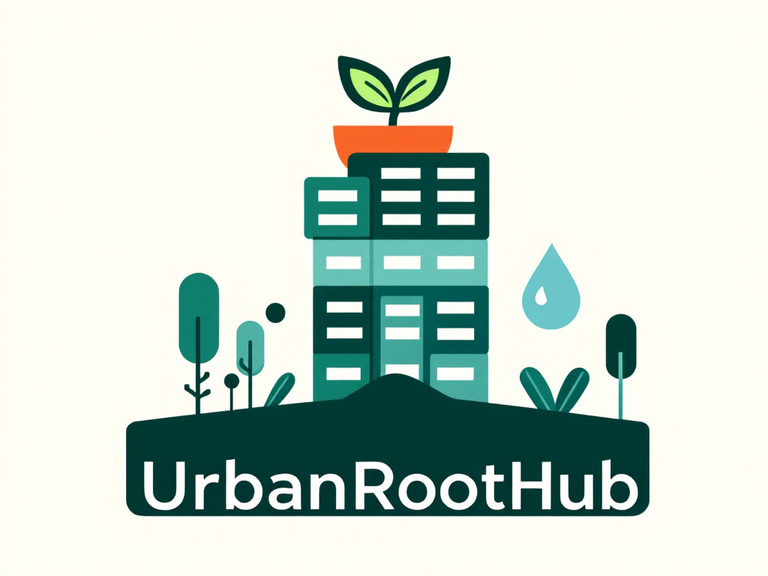How IoT Sensors Power Smart Microfarms in Cities (2025 Urban Farming Guide)
Discover how smart microfarms and IoT sensors are transforming urban agriculture. Learn how real-time crop monitoring is boosting sustainability, efficiency, and yields in compact city farms.
Joel L.
2/26/20254 min read


Smart Microfarms: How IoT Sensors Are Revolutionizing Urban Crop Monitoring (2025 Guide)
Urban farming isn’t just trending—it’s becoming essential. With climate concerns, supply chain issues, and skyrocketing food prices, city dwellers are turning to innovative farming solutions like smart microfarms. These compact, tech-driven urban farms are equipped with IoT sensors that automate monitoring, optimize conditions, and unlock high-yield food production in even the tiniest spaces.
Whether you’re growing herbs on a balcony or running a commercial rooftop operation, integrating smart tech can make your urban farm more efficient, sustainable, and productive.
What Are Smart Microfarms?
Smart microfarms are small-scale agricultural systems—usually under 5 acres—that leverage technology to maximize output in urban or suburban environments. Unlike traditional farms, smart microfarms use IoT (Internet of Things) sensors to collect real-time data and automate care.
These farms thrive in high-density settings like:
Rooftops
Shipping containers
Indoor grow rooms
Garages and backyards
By combining data-driven growing with scalable design, smart microfarms can operate year-round, even in harsh or unpredictable climates.
Why Smart Microfarms Matter in 2025
The demand for sustainable local food is rising—and smart microfarms are answering the call. Here's what makes them powerful:
Efficiency: Maximize food output in small spaces
Sustainability: Slash emissions by growing food locally
Resilience: Operate off-grid or with minimal input
Profitability: Turn small lots into productive food hubs
Scalability: Easily expand with modular IoT setups
These benefits make them perfect for eco-conscious city dwellers, small businesses, and community gardens alike.
The Role of IoT Sensors in Urban Farming
IoT sensors are the digital eyes and ears of your microfarm. These tiny devices continuously track key growing conditions such as:
Soil moisture and temperature
Air humidity
Light intensity
Nutrient and pH levels
CO₂ concentrations
Weather and rainfall forecasts
By collecting and transmitting real-time data, sensors enable precise automation and predictive management—cutting waste while boosting yields.
🌱 Example:
If moisture dips below the optimal level, your system can trigger automated irrigation, watering your crops exactly when needed—no guesswork, no waste.
5 Ways IoT Sensors Are Revolutionizing Urban Crop Monitoring
1. Precision Agriculture in Tight Spaces
Smart farms can deliver targeted watering, lighting, and feeding to individual plants or growing zones. This conserves water, reduces energy use, and boosts productivity—essential for urban environments with limited resources.
2. Real-Time Monitoring & Automation
Sensors can send live updates to your smartphone or dashboard, allowing instant adjustments like:
Opening vents when humidity spikes
Adjusting grow lights based on cloud cover
Shutting off irrigation if rain is detected
3. Remote Management
Traveling or working late? No problem. Smart microfarms can be controlled remotely via cloud-connected apps. Receive alerts, tweak settings, and monitor health from anywhere.
4. Data-Driven Farming Decisions
Analyze past trends and sensor data to:
Predict optimal harvest times
Identify nutrient deficiencies
Prevent mold or pests
Adjust care plans for seasonality
Over time, this creates a custom blueprint for your specific microclimate.
5. Modular Scalability
IoT systems are plug-and-play, meaning you can expand easily by adding more sensors or stacking vertical grow beds. Perfect for rooftop greenhouses, indoor hydroponics, or shipping container farms.
Real-World Success Stories
🌍 SpiruSource Microfarm – California
This urban algae farm uses IoT sensors to maintain exact water pH, light, and oxygen levels, producing spirulina year-round with minimal intervention.
🏙 Vertical Farms – Singapore
In a densely populated city, vertical farms use aeroponics and hydroponics paired with IoT to optimize microclimates for leafy greens, herbs, and fruits—feeding thousands locally.
Top IoT Tools for Urban Microfarms (Starter List)
Here are 3 beginner-friendly IoT devices that help automate your urban growing space:
VODESON 4in1 Plant Soil Meter
Measures moisture, light, temperature, and time. Great for both indoor pots and outdoor containers.Rachio 3 Smart Sprinkler Controller
Automates watering based on real-time weather data. Ideal for balconies, patios, or raised beds.Click and Grow Smart Garden 9
For indoor growing, this smart garden uses LED lighting and self-watering tech to grow herbs, greens, and veggies.
💡 Combine these with a gardening app like Groww, Planta, or AgriTask for even smarter management.
The Future of Smart Urban Farming
Looking ahead, IoT is just the beginning. Urban farms will soon feature:
AI-driven crop optimization
Decentralized food distribution networks
Blockchain-powered supply chain tracking
Crowd-sourced climate data for hyperlocal weather insights
Expect smarter automation, better yields, and more food grown closer to where it's eaten.
Final Thoughts: Grow Smart, Grow Local
Smart microfarms are the future of resilient, local food systems. With IoT sensors doing the heavy lifting, you can grow more, waste less, and stay connected to your crops 24/7.
Whether you’re a tech lover, an eco-warrior, or just want fresher food at home—the tools are already here to start a smart garden on any budget or balcony.
Affiliate Disclosure: This article contains Amazon affiliate links. We may earn a small commission (at no extra cost to you) if you purchase through these links. Every click helps support our mission to empower urban farmers.
